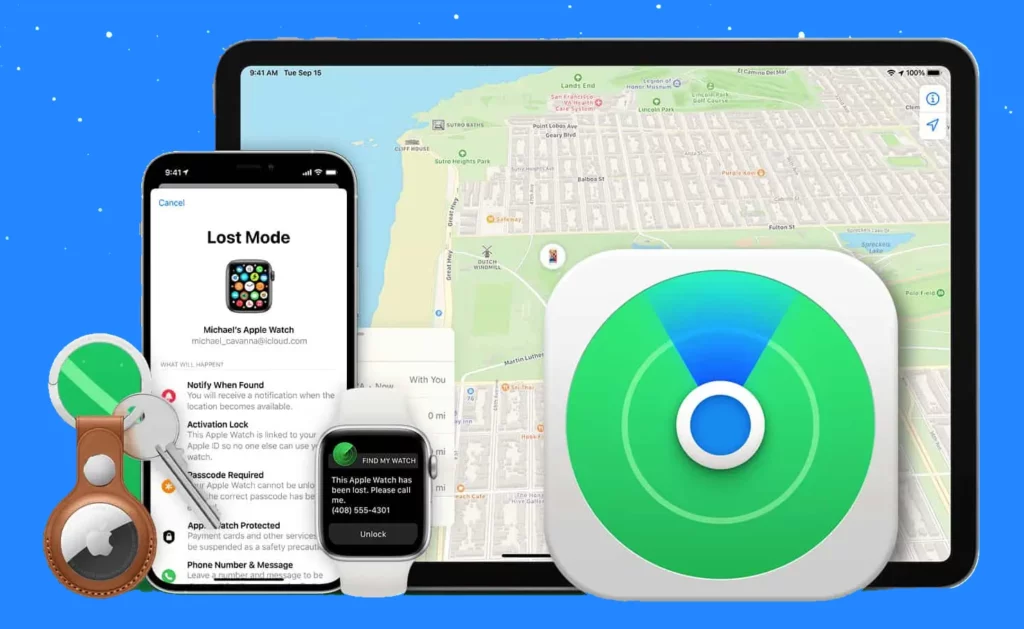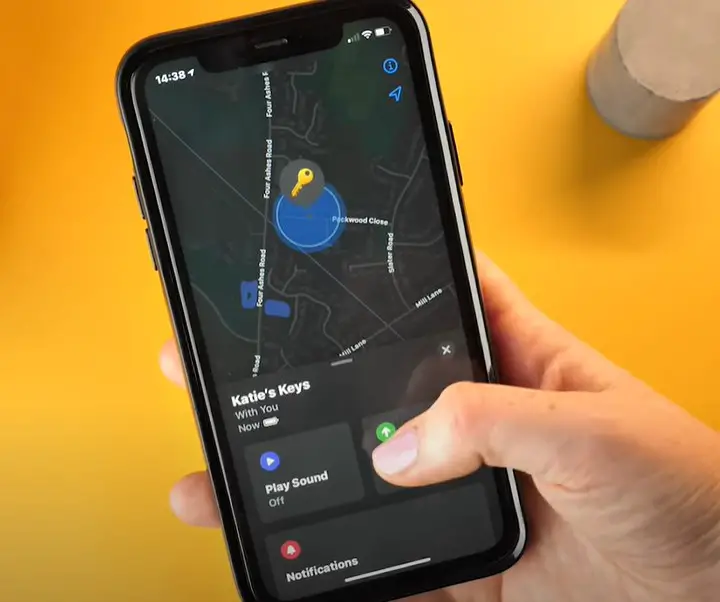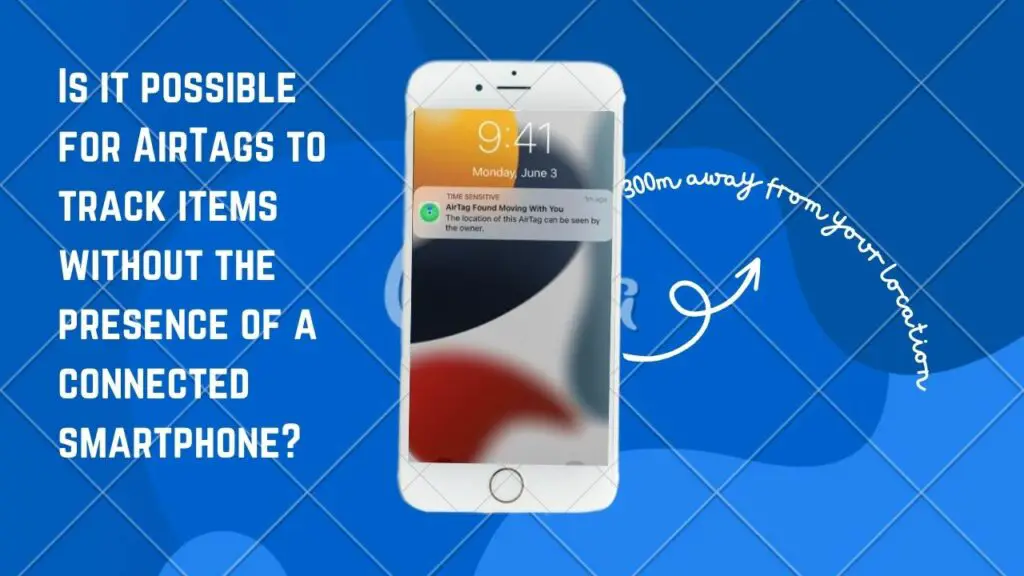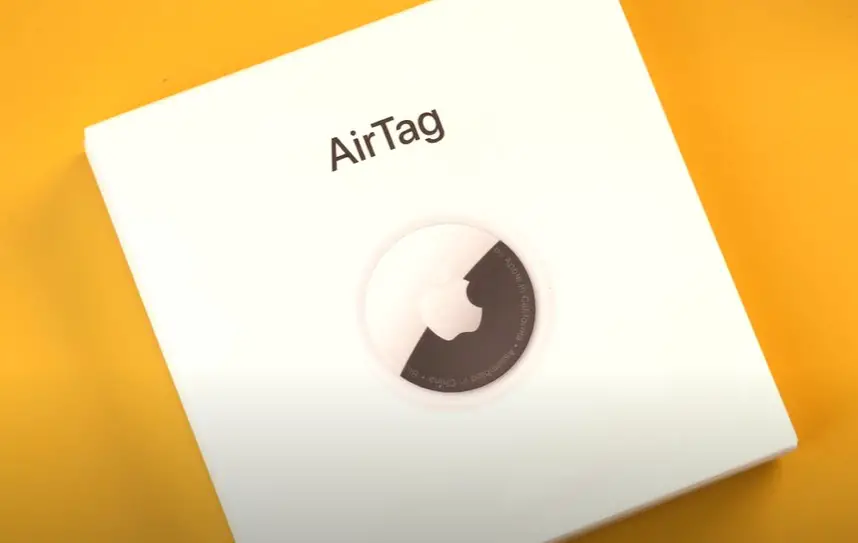AirTag is not equipped with GPS.
Instead, it uses Bluetooth and the Find My network to help you locate lost items.
Let’s explore the details of this topic a bit deeper.

How does AirTag determine its location?
AirTag relies on a combination of Bluetooth technology and the vast Find My network to provide precise location tracking for your belongings.
Each AirTag is equipped with Bluetooth Low Energy (BLE) for communication with nearby Apple devices. When you attach an AirTag to an item, it periodically emits a BLE signal, and any nearby Apple devices (like iPhones, iPads, or Macs) can pick up this signal.
The real magic happens when an Apple device detects the AirTag. It securely sends its location data to Apple’s servers while maintaining the user’s privacy. The Find My network comprises millions of Apple devices worldwide, effectively turning them into anonymous and passive location beacons.
If the AirTag is out of Bluetooth range of its owner’s devices but within the vicinity of another Apple device, it can utilize this network to relay its location data. This collaborative approach ensures that AirTag provides precise and real-time tracking capabilities while upholding stringent privacy and security standards.
Key features of AirTag tracking

AirTag tracking boasts several key features that make it a valuable tool for keeping tabs on your belongings:
- Precision Tracking: AirTags offer precise location tracking, providing real-time updates on your items’ whereabouts. This is especially useful for quickly locating misplaced or lost items.
- Find My Network: AirTags leverage the Find My network, which consists of millions of Apple devices worldwide. This network helps extend the tracking range and increases the chances of locating your items, even if they are out of Bluetooth range.
- Privacy-Centric: Apple places a strong emphasis on user privacy. The AirTag tracking system is designed with privacy in mind, ensuring that location data remains anonymous and secure.
- Customizable Names: You can personalize your AirTags by giving them custom names, making it easy to identify which item you’re tracking within the Find My app.
- Play Sound: AirTags have a built-in speaker that allows you to play a sound on the tag to help you locate it, especially if it’s hidden in a nearby area.
- Lost Mode: If you mark an AirTag as lost in the Find My app, it can notify you when it’s detected by another Apple device. This is particularly useful for lost items.
- Precision Finding (with UWB devices): If you have an iPhone with Ultra-Wideband (UWB) capabilities, AirTags can provide on-screen directions to guide you precisely to the tagged item.
- Replaceable Battery: AirTags use a replaceable CR2032 coin-cell battery, offering long-lasting tracking capability. You can easily replace the battery when needed.
- Water and Dust Resistance: While not fully waterproof, AirTags are designed to withstand some exposure to water and dust, increasing their durability.
- Compatibility: AirTags are compatible with a wide range of Apple devices, including iPhones, iPads, and Macs, ensuring a seamless tracking experience within the Apple ecosystem.
Comparing AirTag to GPS devices
This table summarizes the key differences between AirTag and dedicated GPS devices in terms of tracking and GPS capabilities.
| Aspect | AirTag | Dedicated GPS Devices |
|---|---|---|
| Location Technology | Bluetooth and Find My network | Global Positioning System (GPS) |
| Range | Up to 100 meters (Bluetooth) | Extensive, often several miles or more |
| Tracking Precision | Proximity tracking within Bluetooth range | High-precision, exact geographic coordinates |
| Battery Life | Replaceable coin-cell battery, lasting several months | Built-in rechargeable batteries, lasting for extended periods |
| Use Cases | Everyday tracking of personal items | Outdoor activities, navigation, sports, and more |
| Privacy | Anonymous location data, prioritizes user privacy | Varies; may involve sharing location data with service providers |
| Cost | Relatively affordable | Varies widely based on features and capabilities |

AirTag, utilizing Bluetooth tracking technology, has limitations when used for outdoor tracking, especially when compared to dedicated GPS devices.
Its Bluetooth range is limited, which can be further reduced by obstacles in outdoor environments. AirTag lacks the capability to provide precise GPS coordinates, relying instead on proximity tracking within Bluetooth range, making it less suitable for outdoor activities requiring exact location data.
Additionally, AirTag depends on the Find My network, which might be less effective in remote or less populated outdoor areas. Its intermittent tracking design and replaceable coin-cell battery make it less suitable for continuous outdoor use compared to GPS devices with rechargeable batteries.
Lastly, while it has some resistance to water and dust, AirTag is not fully waterproof, limiting its usability in wet outdoor conditions.
Global applicability of AirTag technology
AirTag technology boasts global applicability, thanks to its widespread compatibility and accessibility across regions.
Bluetooth connectivity, a fundamental component of AirTag tracking, is supported on a global scale, with billions of Bluetooth-enabled devices in use worldwide. This means that users can employ AirTags in virtually any location where Bluetooth technology is prevalent.
The Find My network, a critical part of the AirTag ecosystem, extends its reach across numerous countries and regions. Apple’s extensive global user base contributes to the network’s expansive coverage, ensuring that AirTags can leverage the collective power of Apple devices for location tracking across the globe.
Finally, AirTag technology aligns with stringent privacy standards and regulations, making it acceptable and compliant in various regions. Its commitment to anonymous and secure location data transmission ensures that user privacy remains protected, further enhancing its global acceptance.







